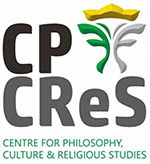Rediscovering Mystagogy through the History of Christianity
DOI:
https://doi.org/10.26593/mel.v26i3.319.297-316Abstract
Mystagogy was developed within early Christian communities, particularly with regard to the Sacraments of Christian Initiation. The idea of mystagogy was conceived in patristic time during the fourth and fifth centuries. Through the homilies and catechetical teachings, the church fathers described mystagogy as part of catecheses for candidates and neophytes before and after Easter. In this article, the idea of mystagogy is reconsidered through its understandings from the Greco-Roman world to early Christianity up to the context surrounding the church of today, mainly in the context of Sacraments of Initiation for adult. How mystagogy works in Christian liturgical teachings on Initiation will be analysed and its role in the liturgical context of the church will be refreshed. The revival of mystagogy has been initiated by the Vatican II when theology, catechesis and culture were put into dialogue. This move brings us further to see mystagogy as a personal and communal formation of a Christian.
Keywords :
*mystagogy, *mystagogue, *myste, *catechesis, *baptism, *church, *initiation, *sacrament, *cult, *rite of passage, *mystery, *christian community, *faith, *spiritual theology, *Vatican II, *liturgy, *revival.Downloads
Published
Issue
Section
License
Copyright (c) 2010 Antonius Budi Wibowo

This work is licensed under a Creative Commons Attribution-NonCommercial 4.0 International License.
MELINTAS applies the Creative Commons Attribution (CC BY NC) license to articles and other works we publish. If you submit your paper for publication by MELINTAS, you agree to have the CC BY NC license applied to your work.


